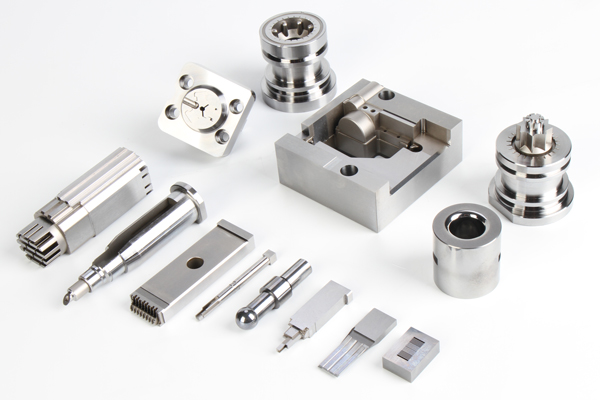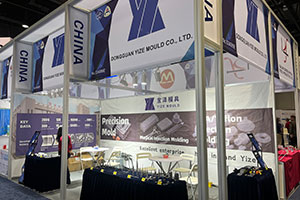The Influence of Injection Molding Process on Surface Finish
I. Introduction In today’s fiercely competitive manufacturing industry, tungsten carbide dies play a pivotal role in mass production due to their excellent characteristics such as high hardness, high wear resistance, […]
I. Introduction
In today’s fiercely competitive manufacturing industry, tungsten carbide dies play a pivotal role in mass production due to their excellent characteristics such as high hardness, high wear resistance, and high thermal stability. They serve as precise tools in industrial production, providing solid support for the molding and manufacturing of numerous products. However, with the continuous evolution of the market environment, competition has become increasingly intense, and consumers’ demands for product quality are also rising. Under such circumstances, ensuring the consistency and high quality of tungsten carbide dies during mass production has emerged as a critical challenge that enterprises urgently need to overcome. This article will delve into effective strategies for ensuring the consistency and quality of tungsten carbide dies in mass production from multiple dimensions, including material selection, design optimization, manufacturing processes, quality inspection, and continuous improvement.
II. Material Selection and Quality Control: Laying a Solid Foundation for Quality
Selecting High-Quality Raw Materials
The performance of tungsten carbide dies is closely related to the quality of raw materials. High-quality raw materials are the cornerstone for creating superior dies. When choosing tungsten carbide raw material suppliers, enterprises should conduct comprehensive and in-depth evaluations. It is advisable to prioritize partners with an excellent reputation and stable quality. Ensure that the purchased raw materials strictly meet the design requirements in terms of key performance indicators such as composition, hardness, and wear resistance. Additionally, every batch of raw materials should undergo rigorous quality inspection to guarantee the stability of raw material quality from the source, thereby providing a solid foundation for subsequent die manufacturing.
Our factory business: carbide parts, mold parts, medical injection molds, precision injection molds, teflon PFA injection molding, PFA tube fittings. email: [email protected],whatsapp:+8613302615729.
Implementing Strict Material Inspection
The material inspection before raw materials enter the warehouse is of utmost importance as it serves as the last line of defense for quality control. The inspection should cover multiple aspects, including chemical composition analysis, hardness testing, and metallographic structure observation. Chemical composition analysis enables precise determination of the elemental composition of raw materials, ensuring compliance with the design formula. Hardness testing provides a direct reflection of the hardness index of raw materials, determining whether they meet the usage requirements of the dies. Metallographic structure observation helps understand the internal structure of raw materials and detect potential defects and issues. These comprehensive inspection methods provide enterprises with detailed performance data of raw materials, offering a reliable basis for subsequent processing and manufacturing.
III. Design Optimization and Standardization: Opening the Door to Efficient Manufacturing
Adhering to a Rational Die Design Concept
Rational die design is a prerequisite for ensuring the consistency and quality of tungsten carbide dies. During the design process, designers need to take into account various factors, such as the processing requirements of the product, production volume, and equipment conditions. By carefully planning the die structure, they can ensure its rationality and scientificity, achieving precise die dimensions and good manufacturability. Moreover, attention should be paid to optimizing the stress distribution of the die. Through reasonable structural layout and mechanical analysis, stress concentration can be reduced, and the risk of die deformation can be minimized, thereby effectively extending the service life of the die.
Promoting Standardized Design
To improve the consistency and production efficiency of dies, enterprises should actively promote standardized design. This involves formulating unified die design standards, dimensional tolerances, and processing technology specifications, providing clear guidelines for die design. Standardized design can significantly reduce design errors and manufacturing errors, enhance the interchangeability and versatility of dies, and lower production costs. Meanwhile, unified norms and standards also contribute to improving production efficiency, shortening the die manufacturing cycle, and giving enterprises a competitive edge in the market.

IV. Manufacturing Processes and Quality Control: Sculpting Precision Dies
Utilizing Advanced Manufacturing Processes
Advanced manufacturing processes are crucial for ensuring the consistency and quality of tungsten carbide dies. During the die manufacturing process, enterprises should actively introduce and adopt advanced processing equipment and technologies, such as high-precision CNC machine tools and laser cutting. These advanced equipment and technologies enable high-precision processing of dies, ensuring that the dimensional accuracy and surface quality of the dies meet the design requirements. Additionally, by continuously optimizing the processing technology and parameter settings, processing errors and deformation can be effectively reduced, improving the manufacturing precision and stability of the dies.
Establishing a Strict Quality Control System
Establishing a strict quality control system during the manufacturing process is essential for ensuring die quality. Enterprises should strengthen real-time monitoring of the processing process and implement strict control over key processes and critical dimensions to ensure that each step complies with quality requirements. Regular dimensional accuracy inspection and surface quality inspection of the dies should be carried out to promptly detect and correct potential quality issues. Furthermore, a comprehensive quality traceability system should be established to record detailed quality information for each batch of products. This allows for quick traceability to the source in case of problems and facilitates the implementation of effective solutions.
V. Quality Inspection and Evaluation: Guarding the Quality Frontline
Conducting Comprehensive Quality Inspection
Quality inspection is a vital link in ensuring the consistency and quality of tungsten carbide dies. After the die manufacturing is completed, enterprises should conduct comprehensive and meticulous quality inspections on the dies, covering multiple indicators such as dimensional accuracy, surface quality, hardness, and wear resistance. Through comprehensive inspection, potential problems and defects in the dies can be identified in a timely manner, providing a basis for subsequent repair and improvement. Only dies that pass strict inspection and meet the quality standards can be put into the market, ensuring that high-quality products are delivered to customers.
Formulating Strict Evaluation Criteria
To ensure the effectiveness and fairness of quality inspection, enterprises should establish strict and scientific evaluation criteria. These criteria should be formulated based on a combination of product design requirements, industry standards, and national standards to ensure the objectivity and accuracy of inspection results. Moreover, the evaluation criteria should be operable and quantifiable, facilitating the statistical analysis of inspection results. Through strict evaluation criteria, the quality of dies can be accurately assessed, providing strong support for enterprise quality management and decision-making.
VI. Continuous Improvement and Optimization: Pursuing Excellence in Quality
Building an Effective Feedback Mechanism
Establishing an effective feedback mechanism is key to continuously improving the consistency and quality of tungsten carbide dies. Enterprises should actively collect customer feedback and production site data to gain a deep understanding of the performance and existing problems of dies in actual use. By analyzing and studying this information, enterprises can promptly identify deficiencies in die design and manufacturing processes and formulate corresponding improvement measures and optimization plans. Through continuous improvement and optimization, the performance and quality of dies can be gradually enhanced to meet the ever-changing market and customer demands.
Promoting Technological Innovation
Technological innovation is a driving force for improving the quality of tungsten carbide dies. Enterprises should increase investment in technological research and development, actively introduce new technologies, equipment, and materials, and continuously optimize the die design and manufacturing processes. Through technological innovation, the precision and performance of dies can be improved, production costs can be reduced, and production efficiency can be enhanced. Meanwhile, technological innovation can also bring new development opportunities and competitive advantages to enterprises, enabling them to stand out in the fierce market competition.
VII. Conclusion
Ensuring the consistency and quality of tungsten carbide dies in mass production is a systematic and complex project that requires enterprises to take a comprehensive approach and implement multiple measures. By carefully selecting high-quality raw materials, optimizing die design, adopting advanced manufacturing processes, establishing a strict quality control system, conducting comprehensive quality inspections, and promoting continuous improvement and technological innovation, enterprises can effectively enhance the consistency and quality level of tungsten carbide dies. Only by continuously improving the quality of tungsten carbide dies can enterprises meet the demands of the market and consumers, win larger market shares and competitive advantages, and achieve sustainable development.






